1,4 Dioxane Removal in Wastewater Effluent
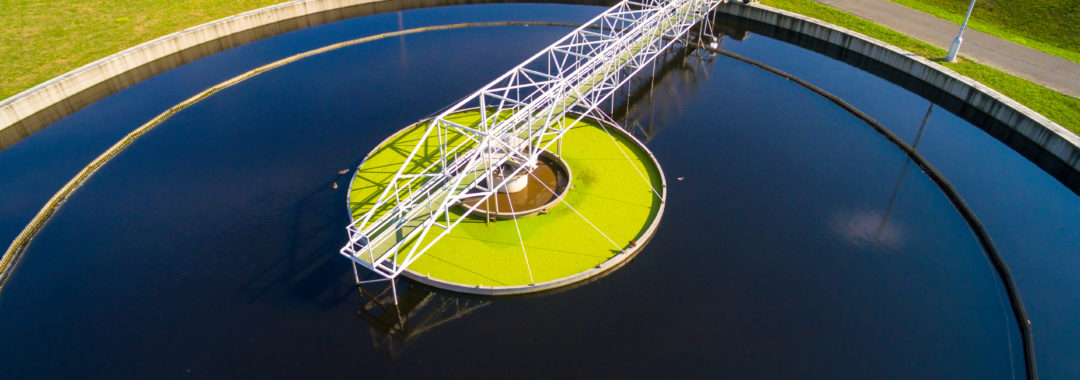
1,4 Dioxane Removal - Treatability Study with MOB Process – Influent Wastewater
The MOB (Mobile Organic Biofilm) process is a novel and sustainable wastewater treatment process developed by Nuvoda to improve settleability, increase treatment capacity, provide simultaneous nutrient removal, and optimize process stability.
The MOB Process removes COD, BOD and 1,4 Dioxane.
The patented MOB process utilizes a highly renewable, naturally occurring lignocellulosic material as a ballasted media for biofilm growth. The adsorptive and high surface area media is machined to approximately 500 um in size, allowing it to act as an optimal media for hybridized fixed film and granular sludge growth.
This hybrid matrix of fixed film and granulation is fully mobile and free to circulate throughout the process, and adaptively grows a stratified microbial community that facilitates robust and versatile simultaneous biological nutrient removal. Since the MOB is free to circulate into a secondary clarifier, the improved settleability by granulation reduces effluent TSS, improves clarifier capacity and makes dewatering sludge more efficient.
Data below shows the results of a study applying the MOB Process to an industrial wastewater effluent for a facility in North Carolina, USA.
Analysis Method
1. Bench-scale batch reactor with single-stage aeration using MOB Process was setup for the wastewater sample. MOB was harvested from Nuvoda’s pilot batch reactor for the study.
2. Hach® Method 8000 for Chemical Oxygen Demand (COD). All the samples were filtered through 0.45 µm filters and tested for soluble COD (sCOD).
3. Hach® Method 10214 (Molybdovanadate Method) for Phosphorus (Orthophosphate, reactive)
4. Hach® Method 10205 (Salicylate Method) for Ammonia (NH3-N)
5. EPA Method 624 Volatiles by SIM for 1,4 Dioxane. (Pace Analytical)
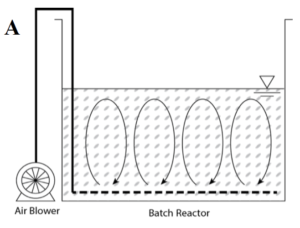 Figure 1. A. Batch reactor with single-stage aeration using MOB™ process for the wastewater sample. The air blower and diffusers aerate and circulate the ballasted media thoroughly for optimal treatment efficiency. |
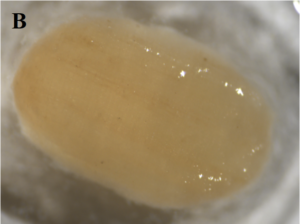 Figure 1. B. Biofilm growth on a ballasted media. The biofilm can remove BOD, COD, ammonia and phosphorus simultaneously. |
Analytical Data
1. Influent Wastewater Sample Properties
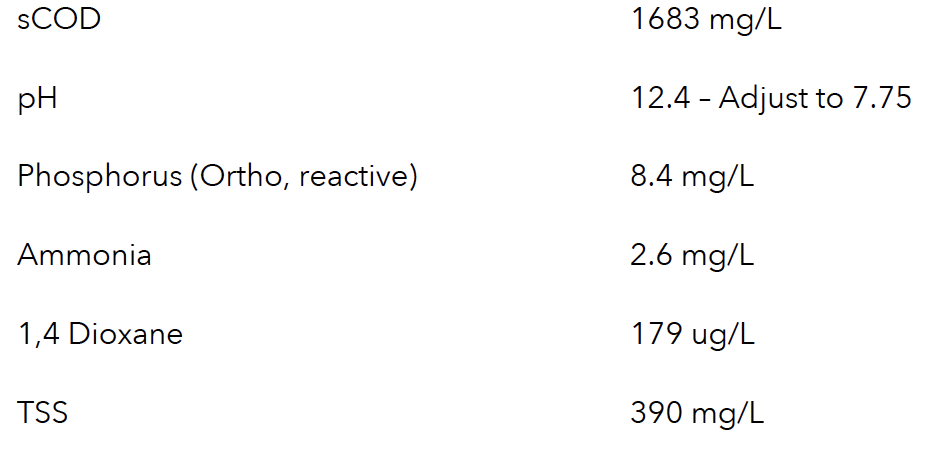
2. MOB Treatment Parameters
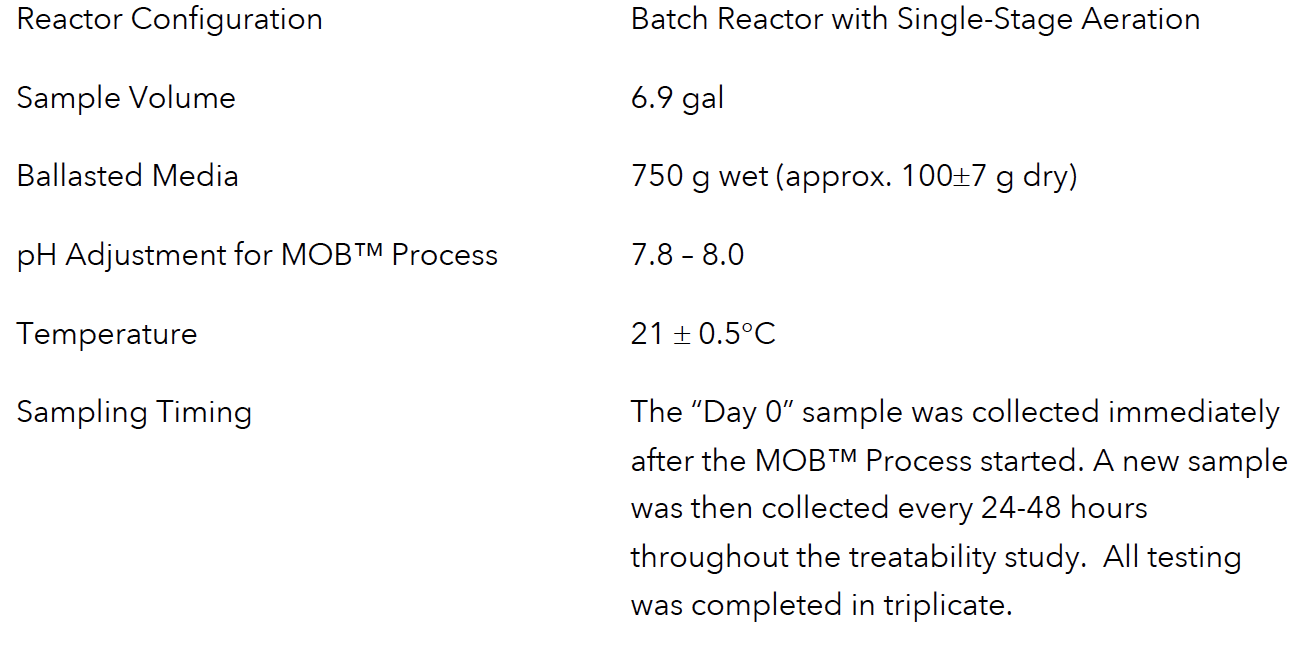
3. sCOD Level Over the 5-day Treatment Process
The aerobic MOB Process removed 84% of sCOD in one day (24 hours) and reached 91% removal in 5 days (120 hours).

4. 1,4 Dioxane
The aerobic MOB Process demonstrated an 88% removal rate of 1,4 Dioxane within 24 hours and 100% removal rate over the 5-day treatability study.
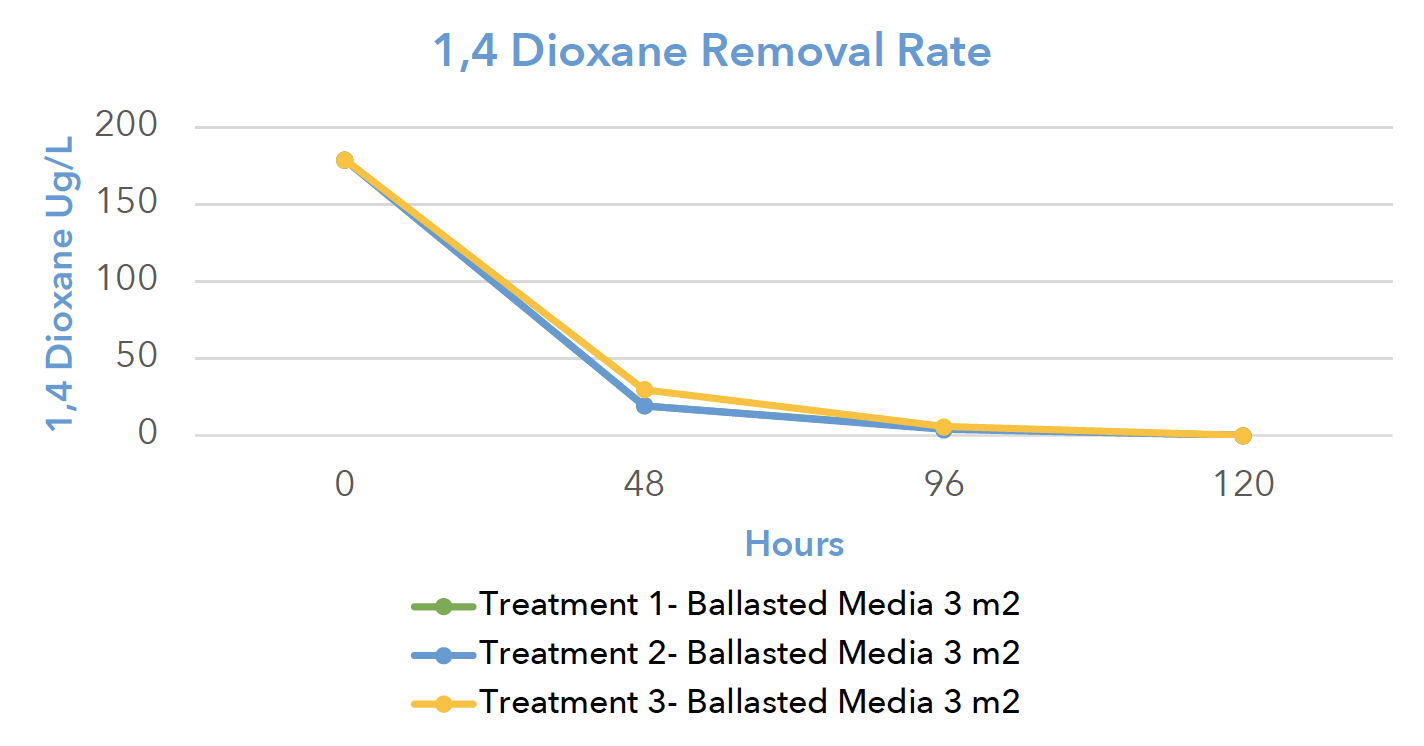
5. Observations and Summary
Through the 5-day study, it was evident that the MOB process successfully reduced COD, BOD, and 1,4 Dioxane and achieve desired effluent concentrations. Since the MOB process is a granulated fixed film technology, it is known to be able to reduce compounds such as 1,4 Dioxane. The aerobic MOB Process demonstrated an 88% removal rate of 1,4 Dioxane within 24 hours and 100% removal rate over the 5-day treatability study. The aerobic MOB Process removed 84% of sCOD in one day (24 hours) and reached 91% removal in 5 days (120 hours).
For more information on the MOB Process please refer to nuvodaUS.com or contact a technical resource at sales@nuvodaUS.com.
